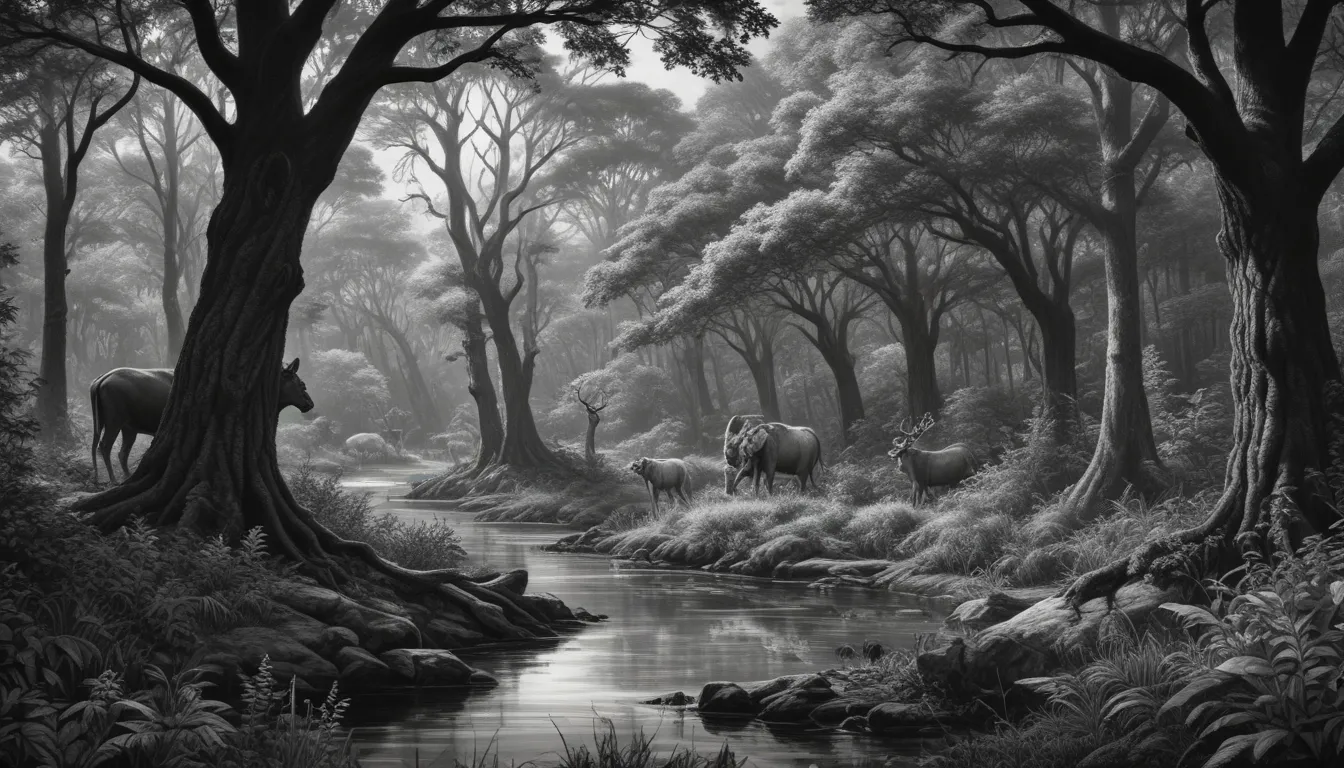The images in our articles are for illustrative purposes only and may not exactly match the content. They are intended to capture your interest and complement the text, not to replace it.
Lafayette, Louisiana, is a city that boasts not only a rich cultural heritage and vibrant music scene but also a diverse array of wildlife and natural reserves. From the majestic bald cypress trees in the swamps to the fascinating bird species that call this region home, Lafayette is a haven for nature enthusiasts. In this article, we will delve into the captivating world of local wildlife and the pristine natural reserves that make Lafayette a nature lover’s paradise. So, grab your binoculars and get ready to embark on an adventure through the enchanting landscapes of Lafayette, Louisiana. Let’s discover the hidden gems of local wildlife and natural reserves that make this city a true natural wonder.
Discover the Rich Wildlife Diversity of Lafayette, Louisiana
- Lafayette, Louisiana is a haven for diverse wildlife, including alligators, birds, and fish, making it a popular destination for nature enthusiasts and birdwatchers.
- The city’s natural reserves and wetlands are vital for preserving biodiversity and providing habitats for numerous species, contributing to Lafayette’s unique charm and attracting outdoor enthusiasts and nature lovers.
Lafayette’s Natural Splendor: Atchafalaya Basin and More
Lafayette, Louisiana, is home to the Atchafalaya Basin, the nation’s largest river swamp, which contains almost one million acres of America’s most significant bottomland hardwoods, swamps, bayous, and backwater lakes. The basin provides a habitat for a wide variety of wildlife, including alligators, birds, and fish, making it a popular destination for nature enthusiasts and birdwatchers.
The city’s proximity to the Gulf of Mexico contributes to its diverse ecosystem, featuring marshes, estuaries, and coastal plains. Lafayette is part of the Mississippi Flyway, one of the four major bird migration routes in North America, making it a prime location for birdwatching.
Explore the Bird Species of Lafayette
Lafayette is known for its diverse bird population, including herons, egrets, ibis, and numerous other waterfowl. The city’s wetland habitats provide an ideal environment for these birds, attracting bird enthusiasts from near and far.
Natural Reserves and Wildlife Management Areas Around Lafayette
Surrounded by natural reserves and wildlife management areas, Lafayette offers ample opportunities for outdoor activities such as hiking, birdwatching, and wildlife photography. These protected areas are crucial for preserving the region’s natural beauty and providing habitats for a wide range of wildlife.
The Vermilion River, flowing through Lafayette, serves as a vital waterway for the region’s wildlife. The river and its surrounding wetlands support a diverse ecosystem, sustaining various species of fish, reptiles, and other aquatic wildlife.
Lafayette’s Cypress Island Preserve
The Cypress Island Preserve, located near Lafayette, is a sanctuary for wildlife, particularly migratory bird species. The preserve’s cypress-tupelo swamp provides essential habitat for a diverse array of birdlife, offering unique opportunities for birdwatching and nature appreciation.
The Importance of Biodiversity Conservation in Lafayette
The natural reserves and protected areas in and around Lafayette play a crucial role in conserving the region’s biodiversity. These habitats support a wide range of plant and animal species, including rare and endangered ones, making them invaluable for ecological preservation and wildlife conservation efforts.
Lafayette’s Wetlands: A Haven for Wildlife Conservation
The wetlands in and around Lafayette are vital for wildlife conservation, providing critical habitats for numerous species of birds, mammals, reptiles, and amphibians. These ecosystems are essential for maintaining the balance of local wildlife populations and preserving the overall ecological health of the region.
Embrace Lafayette’s Natural Beauty
The natural beauty of Lafayette, with its diverse wildlife and scenic landscapes, attracts outdoor enthusiasts and nature lovers. Whether it’s birdwatching, wildlife photography, or simply enjoying the tranquility of nature, Lafayette offers a wealth of opportunities for experiencing and appreciating the local wildlife and natural reserves.
Lafayette’s Unique Charm and Ecological Richness
The abundance of wildlife and natural reserves in Lafayette contributes to the city’s unique charm and serves as a testament to the region’s ecological richness. These natural assets not only provide recreational and educational opportunities but also enhance the overall quality of life for residents and visitors alike, making Lafayette a truly special place to experience the wonders of nature.
Conclusion: Preserve Lafayette’s Natural Wonders
Exploring the local wildlife and natural reserves in Lafayette, Louisiana is an enriching experience that offers a deeper connection to the environment. By learning about the wildlife and natural reserves in Lafayette, we gain a greater understanding of the importance of conservation and the delicate balance of ecosystems. Embracing and preserving these natural wonders ensures that future generations can continue to marvel at the beauty of Lafayette’s wildlife and natural reserves.
FAQs: Your Guide to Lafayette’s Wildlife and Natural Reserves
- What wildlife can be found in Lafayette, Louisiana?
Lafayette is home to a diverse range of wildlife, including alligators, turtles, various bird species, and unique aquatic life in its natural reserves and wetlands. - Are there any guided tours available for exploring the local wildlife?
Yes, there are several guided tours offered at different natural reserves in Lafayette, providing an educational and immersive experience for visitors to learn about the local wildlife. - What are the best times of year to visit the natural reserves in Lafayette?
The fall and spring seasons are ideal for visiting the natural reserves in Lafayette, as the weather is pleasant and wildlife activity is often at its peak during these times. - How can I contribute to the conservation efforts for local wildlife in Lafayette?
You can contribute to the conservation efforts by supporting local wildlife organizations, participating in volunteer programs, and spreading awareness about the importance of preserving natural habitats.







